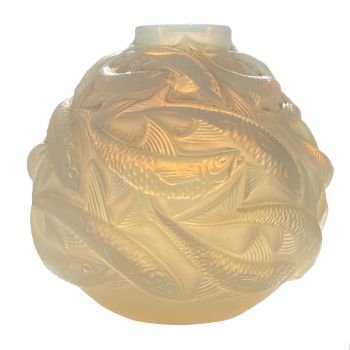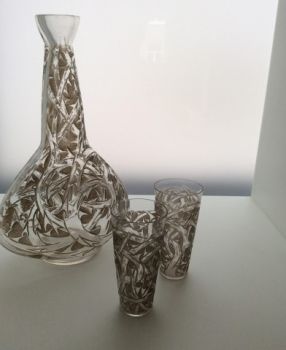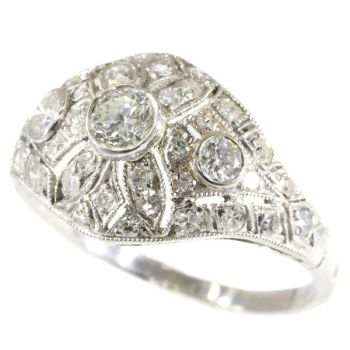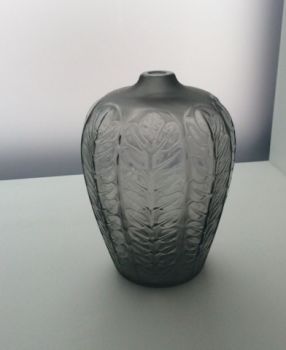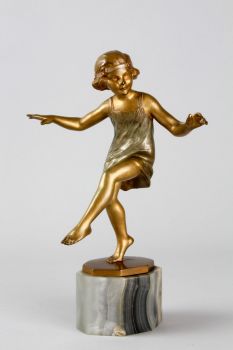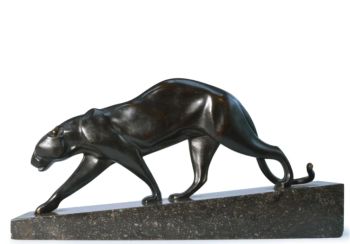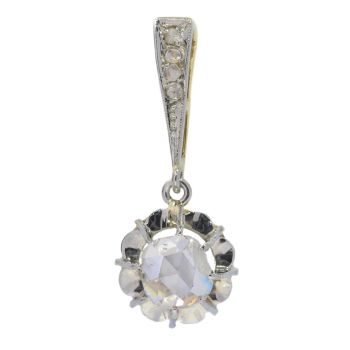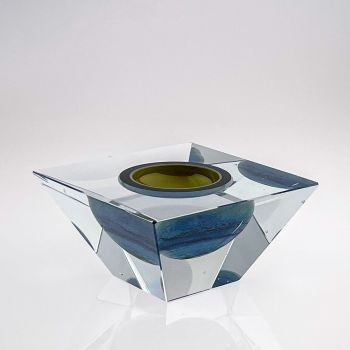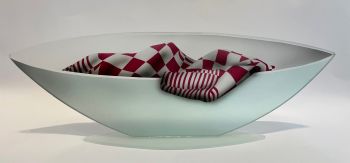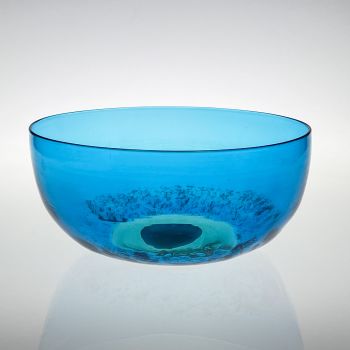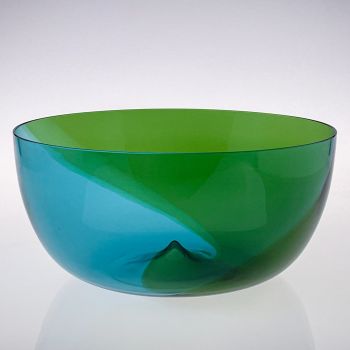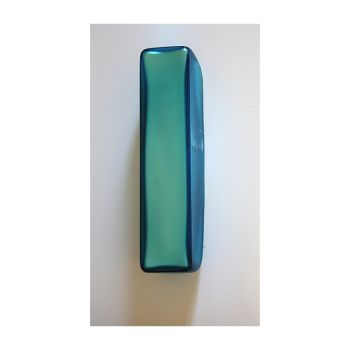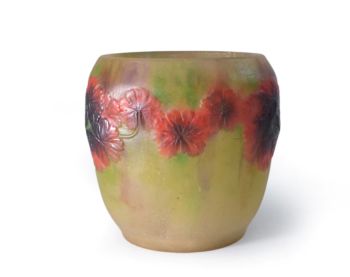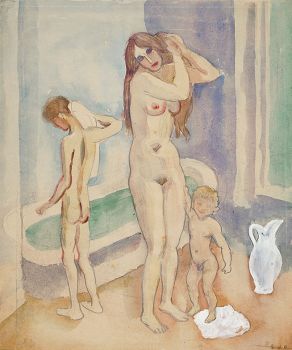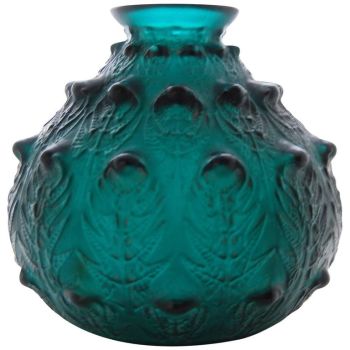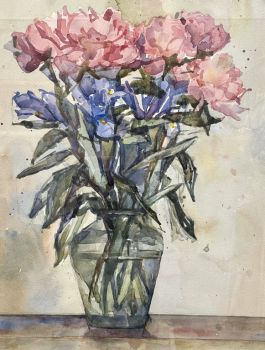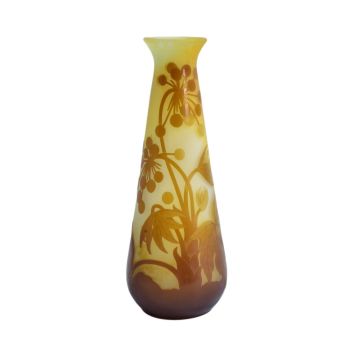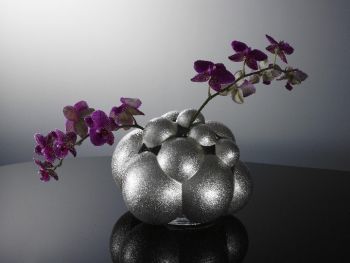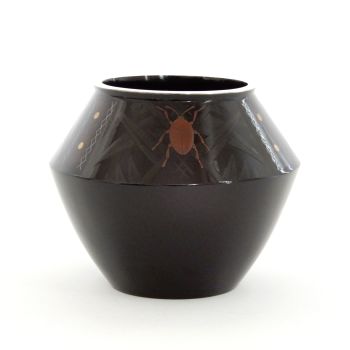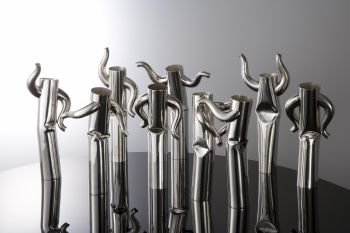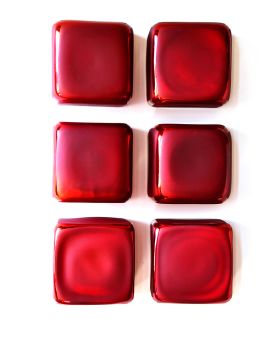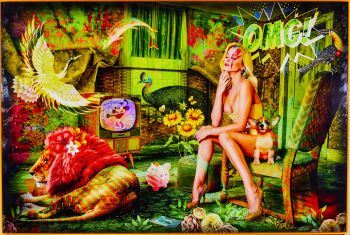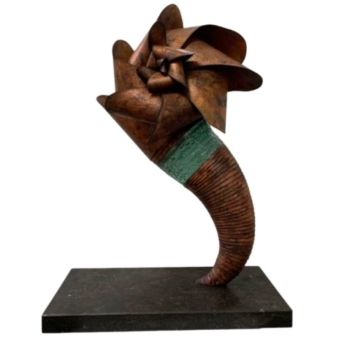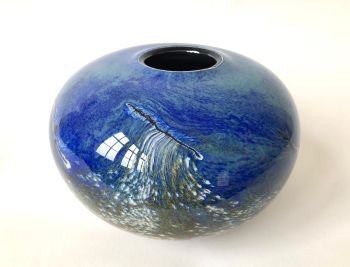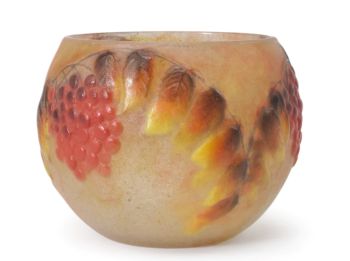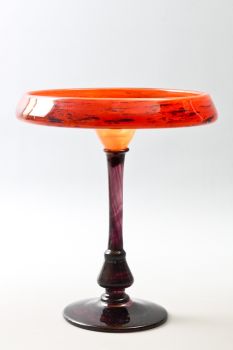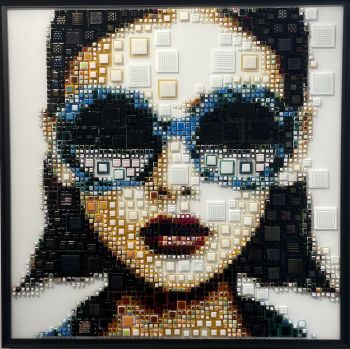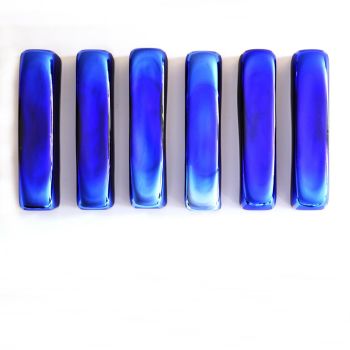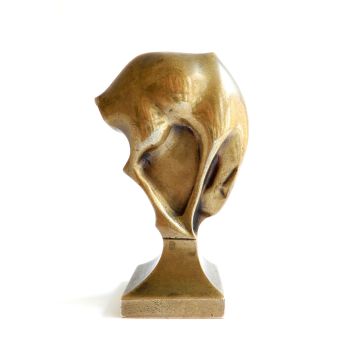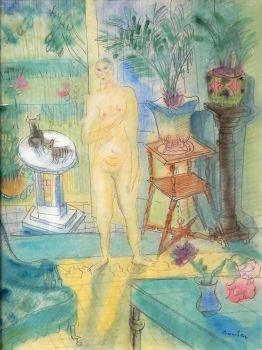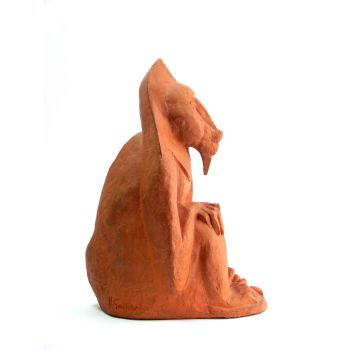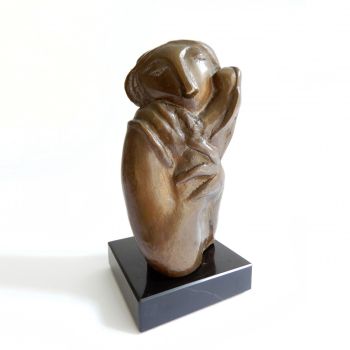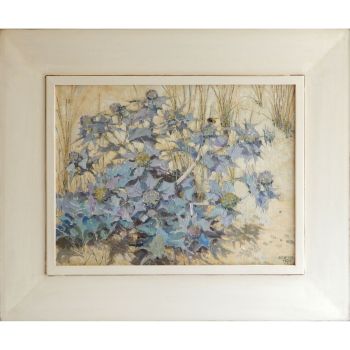Vase 'Gui' or Mistletoe 1920
René Lalique
Glass
17 cm
ConditionNear mint
Price on request
Dille Art
- About the artworkThis vase with the refined decoration featuring mistletoe ('Gui' in French) is a beautiful design by René Lalique from 1920.
The exquisite way in which the mistletoe is intertwined with the vase is stunning. So elegant. This vase is made of opalescent glass, the berries and leaves are lightly polished for added accent.
The beauty of opalescent glass is that it takes on a milky blue-white colour when held up to light; when light is shone behind or through the vase, it takes on a golden yellow glow. René Lalique had a special recipe to achieve this effect optimally, using ingredients like arsenic and even real gold.
The vase is blown into the mould (soufflé moulé) and then carefully hand-finished. The vase bears model number 948, and the mould number is 1435.
This vase was produced relatively briefly because Lalique decided in the early 1930s to remove it, along with other vases, from the collection due to the depression. These vases were labour-intensive to make, still being blown into the mould rather than pressed, and finished by hand. The vase was only available from stock at that time. These vases are very popular among collectors today, partly because of their refined finish, but also because they are rarer due to the shorter production period.
The vase is signed 'R. Lalique' on the bottom.
Condition:
There is an enclosed black pinhead in the neck; it is visible but not tangible. Most likely happens with production of the vase. - About the artist
René Jules Lalique (6 April 1860, Ay, Marne - 1 May 1945, Paris) was born on the 6th of April in 1860, in Ay, Marne.
He was a French glass designer known for his creations of glass art, perfume bottles, vases, jewellery, chandeliers, clocks and automobile hood ornaments.
In 1872, when he was twelve, he entered the Collège Turgot where he started drawing and sketching. He attended evening classes at the Ecole des arts décoratifs. He worked there from 1874-1876 and subsequently spent two years at the Crystal Palace School of Art Sydenham, London. At the Sydenham Art College, his skills for graphic design were improved, and his naturalistic approach to art was further developed.
When he returned from England, he worked as a freelance artist, designing pieces of jewellery for French jewelers Cartier, Boucheron and others.
In 1885, he opened his own business and designed and made his own jewellery and other glass pieces. By 1890, Lalique was recognized as one of France's foremost Art Nouveau jewellery designers; creating innovative pieces for Samuel Bing's new Paris shop, Maison de l'Art Nouveau. He went on to be one of the most famous in his field, his name synonymous with creativity, beauty and quality.
Lalique was best known for his creations in glass art. In the 1920s, he became noted for his work in the Art Deco style. He was responsible for the walls of lighted glass and elegant coloured glass columns which filled the dining room and "grand salon" of the SS Normandie and the interior fittings, cross, screens, reredos and font of St. Matthew's Church at Millbrook in Jersey (Lalique's "Glass Church").His earlier experiences in Ay were his defining influence in his later work. As a result, many of his jewellery pieces and vases showcase plants, flowers and flowing lines.
Both unique and commercial works of René Lalique are in the collections of a large number of public museums around the world including the Museu Calouste Gulbenkian in Lisbon, the Musée Lalique and the Musée des Arts Décoratifs in France, the Schmuckmuseum Pforzheim in Germany, the Victoria and Albert Museum in London, the Metropolitan Museum and the Corning Museum in New York State, and the Rijksmuseum in Amsterdam.
René Lalique passed away on the first of May in 1945, in Paris.
Are you interested in buying this artwork?
Artwork details
Related artworks
- 1 - 2 / 2
- 1 - 4 / 24
Johann Loetz (Lötz) Witwe Klostermühle
Johann Loetz Witwe - Phänomen Genre 7773 – Orange1900 - 1910
Price on requestAntiques Emporium
Gabriel Argy-Rousseau
Gabriël Argy-Rousseau – Crabes et Algues vase – 19201920 - 1929
Price on requestAntiques Emporium
1 - 4 / 24René Lalique
A very rare deep green ‘Fougeres’ Vase designed by R. Lalique1912
€ 8.950Lennart Booij Fine Art and Rare Items
 Curated by
Curated bySilla Scheepens
Unknown artist
Japanese art deco lacquervase with Scarab beetle motif1920 - 1950
Price on requestDille Art
1 - 4 / 24Unknown artist
A rare filigrana a retortoli goblet1550 - 1600
Price on requestPeter Korf de Gidts - Antiquairs
1 - 4 / 24- 1 - 4 / 12








